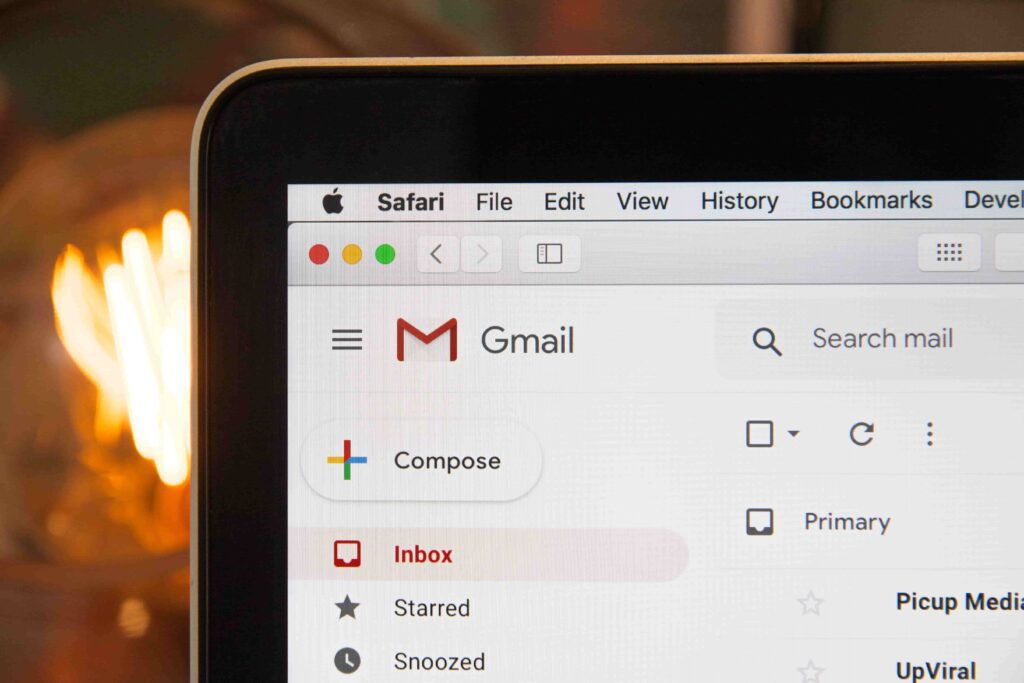Closing the Loop: Unleashing the Power of Customer Feedback Loops
In today’s market, the primary concern for consumers is ensuring a positive customer experience. Surprisingly, a staggering 86% of customers are willing to pay a premium for an enhanced customer experience. To prioritise your customers, it is essential to establish a robust customer feedback loop.
This comprehensive guide will take you through the key stages of creating a customer feedback loop and underscore the significance of leveraging customer feedback as a fundamental tool for enhancing business processes.
You can find additional guidance on how to close your customer feedback loop here.
What is a Customer Feedback Loop?

The essence of a customer feedback loop lies in its ability to continuously enhance and refine your product through valuable user reviews, opinions, and suggestions. This iterative process revolves around fostering meaningful interaction between your business and its customers. Integrating customer feedback is not merely about gathering the voice of the customer; it is about utilising this valuable input to drive the development of products, processes, and strategies that optimise your overall business functionality.
What is a Negative Feedback Loop?
A negative feedback loop refers to the process in which a company actively listens to customer complaints or grievances and leverages that feedback to enhance their products or customer service. This loop is aptly named because the customer’s feedback serves as valuable input for redesigning their product, creating a continuous cycle of improvement.
The negative feedback loop proves advantageous for both businesses and customers: customers feel valued and respected by the business, leading to increased brand advocacy and customer loyalty, while the business’s design and offerings are refined to amplify customer satisfaction. To delve deeper into successful implementations of negative feedback loops, let’s explore some illustrative examples.
Negative Feedback Loop Example – Best Buy
Best Buy, the largest retailer of consumer electronics worldwide, has successfully leveraged a negative feedback loop to continually enhance its customers’ experience. In 2010, the company introduced VOCE (Voice of Consumers Through Employees), a research tool dedicated to collecting customer feedback and complaints.
This initiative enabled Best Buy to listen and learn from its customers in real-time, positioning the company as an industry leader by addressing gaps in selection, service, and convenience, according to Steve Wallin, Senior Director of Best Buy’s Consumer Insights Unit.
Upon gathering customer feedback through VOCE, Best Buy swiftly implemented significant improvements to its service model. They streamlined the mobile pickup order process, clarified the distinction between Customer Service and Geek Squad for a better customer understanding, and established the Geek Squad Lounge, providing personalised assistance before customers left the store. By attentively listening to their customers and strategically enhancing the areas that mattered most to them, Best Buy not only saved valuable resources but also ensured targeted improvements aligned with their customers’ needs.
In comparison to relying solely on market research, Best Buy’s utilisation of a negative feedback loop proved to be more effective in pinpointing the specific aspects of their service that directly impacted customers. This customer-centric approach enabled Best Buy to continually refine its offerings and elevate the overall customer experience, resulting in increased customer satisfaction and a strengthened market position.
What is a Positive Feedback Loop?

A positive feedback loop encompasses the process wherein a company actively listens to its employees’ constructive ideas and utilises that feedback to enhance internal structure and workplace satisfaction. By fostering an improved work environment, the company can effectively boost its profitability.
This loop operates on the premise that employees’ feedback serves as valuable input for restructuring the work culture, thereby creating a continuous cycle of improvement. Unlike a negative feedback loop that focuses on customers’ input to enhance the product, a positive feedback loop centres around employees’ input to create a better workplace.
Implementing a positive feedback loop can take various forms, ranging from formal to informal processes. It involves collecting employee feedback regarding their overall job satisfaction and taking responsive actions to cultivate a happier workforce. Recognizing the significance of a positive feedback loop is crucial for the long-term success of your business. While happier employees contribute to higher employee retention rates, their satisfaction is also directly linked to your company’s financial prosperity.
In an excerpt from Noelle C. Nelson’s book, “Make More Money by Making Your Employees Happy,” it was observed that stock prices of Fortune’s 100 Best Companies to Work For rose an average of 14% per year since 1998, in contrast to the six percent rise for the general market during the same period. Numerous studies have consistently shown that when employees are content in their workplace, they exhibit greater dedication and commitment, investing more time and effort into their work.
By embracing a positive feedback loop, your business can foster a thriving work environment, fuel employee satisfaction, and ultimately drive long-term success.
Positive Feedback Loop Example – Microsoft
In 2014, Microsoft faced the daunting challenge of addressing its toxic work culture, marked by high pressure and intense internal competition that had eroded unity among employees. To steer the company towards a positive transformation, Satya Nadella was appointed as the new CEO. His first major undertaking involved restructuring the organisation to mitigate departmental rivalry.
Nadella initiated this change by urging every employee to realign their focus on three shared goals. Communicating via an email to his workforce, he presented a new mission statement, emphasising the importance of teamwork, a clear strategy, and a culture that nurtures individual and collective excellence. Nadella concluded his message to Microsoft employees by affirming his belief that culture is not static but evolves daily through the actions and behaviours of every individual within the organisation.
By leveraging employee feedback, Satya Nadella successfully improved the internal structure of Microsoft while fostering unity within the company. Today, Microsoft operates under a unified vision rather than fragmented teams with conflicting objectives. This shift enables employees to collaborate harmoniously, sharing responsibilities and working together towards a common purpose. Through Nadella’s strategic leadership, Microsoft has created an inclusive and cohesive work environment, where the potential for innovation and achievement is boundless.
The 4 Customer Feedback Loop Stages
To effectively implement a customer feedback loop, it is essential to break it down into four distinct stages. These stages are as follows:
Collecting Customer Feedback

The first stage involves actively gathering feedback from your customers. This can be done through various channels such as surveys, interviews, social media listening, or customer support interactions. The goal is to obtain valuable insights directly from your customers, enabling you to understand their needs, preferences, and pain points.
Survey Tools
Utilize online survey tools that allow you to create customised questionnaires tailored to your specific needs. Popular options include Net Promoter Score (NPS) and Customer Satisfaction (CSAT) surveys. These tools provide structured frameworks for collecting feedback efficiently.
Online Review Platforms
Depending on your industry, you can rely on online review platforms to capture customer satisfaction levels. Brick-and-mortar businesses like bars and restaurants often monitor Google reviews, while software companies leverage software review platforms to gauge customer sentiments. E-commerce businesses, on the other hand, benefit from direct product reviews submitted by customers.
Live Chat and Call Data
Engage in conversations with customers through live chat support or track customer feedback through call data obtained from your virtual phone system. These real-time interactions can provide valuable insights into customer experiences and concerns.
Product Suggestion Forums
Establish forums or platforms where customers can suggest ideas or improvements for your products or services. Encourage open discussions and invite customers to share their thoughts and suggestions.
Social Media Monitoring
Monitor social media platforms for mentions, comments, and messages related to your brand. This allows you to capture customer feedback shared publicly and respond promptly to any issues raised.
Regardless of your business type, there are ample opportunities to gather customer feedback. It is crucial to prioritise this step, as it provides valuable insights into areas of success and areas that require improvement.
Focus on Short-Form Feedback to Increase Response Rates
Studies have shown that shorter surveys tend to yield higher response rates compared to longer ones. To enhance survey engagement, consider adopting a strategy that involves asking fewer questions more frequently.
By actively collecting feedback and focusing on short-form surveys, you can effectively gather customer insights and foster a productive feedback loop to drive continuous improvement.
Analyzing Feedback Data

Once you have accumulated a significant volume of feedback, it becomes imperative to analyse the data and derive actionable insights. Survey tools, chat platforms, phone analytics, and other feedback collection tools often provide user-friendly dashboards where you can extract and visualise this valuable information.
During the analysis phase, you are likely to identify recurring patterns within the feedback. It’s possible that customers repeatedly mention specific issues or pain points in their less-than-satisfied reviews. For instance, you might discover that your desktop app crashes when used on a particular operating system, or that the in-app chat tool fails to adequately address customer inquiries. It could even be that your product’s dashboards are confusing to navigate. By recognising these consistent themes, both in negative and positive feedback, you gain deeper insights into areas that require attention and improvement.
Effectively incorporating feedback entails addressing these issues promptly and channelling them to the relevant teams within your organisation. For technical concerns like a malfunctioning widget, you can create a concise brief detailing the issue and involve your development team in finding a solution. Similarly, if non-technical issues such as a perplexing onboarding process arise, your customer success team can take charge of resolving them. This collaborative approach showcases the feedback loop in action.
Even teams not directly involved in customer-facing roles, such as sales or customer service, should remain mindful of customer feedback. Incorporating this approach ensures that customers are at the forefront rather than an afterthought in all aspects of product development, content creation, and process implementation across every team and department.
By analysing feedback systematically and promptly addressing issues, you can foster a customer-centric culture where continuous improvement thrives throughout your organisation.
Applying Feedback and Beginning to Test

Once you have reviewed your feedback data, it’s time to move on to the testing phase, where applicable. For instance, if you need to enhance the clarity of your support page, you can conduct an A/B test, comparing different variations and collecting feedback. The winning version should be implemented, but if it doesn’t yield the desired results, it’s back to the drawing board for further improvements.
In addition to testing, it is crucial to actively seek additional feedback from customers, especially those who provided suggestions, corrections, or feedback initially. Sending an email to inform them about the updates made and requesting their additional input is a vital step in the third stage of your feedback loop.
Incorporating feedback throughout the testing process not only facilitates improvements but also strengthens your relationship with customers. It is worth noting that 88% of U.S. consumers express a desire to engage with brands that prioritise meeting customer expectations. By actively involving customers in the feedback loop, you demonstrate your commitment to their satisfaction, fostering a positive and collaborative relationship.
Harnessing customer feedback and engaging them in the testing process allows for continuous refinement, ensuring that your offerings align with their expectations and needs. Remember, the feedback loop is an iterative process, and by actively involving customers, you enhance their experience while driving the growth and success of your business.
Following Up with Customers

The final step in the feedback loop is to effectively close it by following up with your customers. When customers provide suggestions or feedback to your team, it is crucial to reach out to them directly and acknowledge their input. For instance, if you have implemented a customer’s suggestion to improve your product by fixing a bug, resolving a broken submission form, or adding new integrations, send them a personalised email expressing gratitude and informing them about the positive impact their feedback had on your team.
By reaching out to customers individually, you not only demonstrate the value you place on their feedback but also make them feel heard and appreciated. It goes beyond simply acknowledging that their feedback was received and understood by your team; it showcases your commitment to taking action based on customer input to drive larger business goals.
When responding to customers who provided feedback, you can also take the opportunity to ask those who left low or negative reviews if they would consider updating their reviews now that you have implemented the suggested changes. This can contribute to improving your overall review score and showcase the progress made based on customer feedback.
Similarly, you can approach customers who provided positive feedback and ask for their permission to feature their feedback on a testimonials page on your website. Displaying customer testimonials on your landing page serves as valuable social proof, boosting confidence and credibility in your offerings.
It is important to consider timing in this process. If your team is facing time constraints in managing feedback intake and customer follow-ups, leveraging a marketing automation tool can help streamline and automate these processes efficiently.
By actively closing the loop with your customers through personalised follow-ups, you strengthen the customer-business relationship, foster loyalty, and demonstrate your commitment to their satisfaction. This completes the feedback loop and sets the stage for ongoing engagement and continuous improvement.
Why Do I Need a Customer Feedback Loop?
Implementing customer feedback loops is a highly effective strategy to ensure your team remains dedicated to delivering exceptional customer experiences. These loops provide your team with direct insight into the experiences and challenges faced by your customers. By utilising a feedback loop, you can gain a deeper understanding of your customers’ thoughts and emotions, thereby improving their interaction with your brand and gaining a competitive advantage.
Moreover, customer feedback loops provide valuable data-driven insights into customer sentiment, enabling your teams across all departments to tailor their deliverables to meet the needs of different customer segments.
Ultimately, these feedback loops enhance customers’ perception of your brand by demonstrating your attentiveness to their unique concerns, emotions, and experiences. So why wait? Implementing feedback loops is a straightforward way to boost customer satisfaction, and with automation, it can be easily scaled to accommodate growing demands. It’s a mutually beneficial solution.
Customer Feedback Loop Top Tips

Acknowledge your Customers’ Efforts
Recognize that providing feedback requires your customers to invest their time, so it’s important to appreciate this effort. By acknowledging their contribution, you can motivate them to continue sharing feedback in the future. Take a moment to express gratitude and assure them that their voices have been heard.
Additionally, if you make any changes based on their feedback, be sure to communicate this to them. This not only demonstrates that their input is valued, but also validates their efforts, reinforcing the notion that their feedback is impactful and worthwhile.
Automate Actions From Feedback
Automating simple feedback requests and responses is essential to alleviate the workload of your customer service teams, allowing them to focus on tackling more complex issues. By establishing experience workflows, you can identify which feedback calls for automated responses and which situations necessitate a personal, human touch.
This approach streamlines the process, ensuring that routine inquiries are handled efficiently and freeing up valuable resources to address more significant challenges.
Choose the Right Platforms
Based on the feedback you have received, it is important to consider reaching out to your customers through various communication channels. For instance, if a loyal customer expresses negative feedback, such as a complaint about your service, it would be more appropriate to address their concerns personally through a phone call or an email rather than sending a generic “Thanks for your feedback!” message. Tailoring your response based on the nature and significance of the feedback can help ensure effective resolution and maintain a positive customer relationship.
Take On Feedback
While receiving feedback is valuable, the true objective of collecting customer feedback is to enhance your products and services. It is crucial to ensure that your team can easily access feedback insights and fully comprehend the necessary actions to implement beneficial improvements. By enabling your team to effectively utilise feedback data and providing clear guidance on the next steps, you can drive meaningful changes that positively impact your offerings and customer satisfaction.
FAQ
What is a Customer Feedback Loop?
A customer feedback loop is an effective customer experience strategy designed to continuously enhance and refine your product through user reviews, opinions, and suggestions. It operates on the principle of fostering mutual interaction between your business and its customers. By actively engaging with your customers and incorporating their valuable input into product development, you can create a dynamic feedback loop that drives continuous improvement and ensures a customer-centric approach to your offerings.
What is the Feedback Loop with Customer in a Startup?
A customer feedback loop is an ongoing process of collecting customer feedback and utilising the insights gained to enhance products and services. It involves a continuous cycle of gathering input from customers and applying that knowledge to make meaningful improvements. By implementing a customer feedback loop, businesses can proactively address customer needs and preferences, ensuring a continuous cycle of improvement and innovation.
What is a Closed Customer Feedback Loop?
Closed-loop feedback refers to the practice of directly responding to customer feedback, thereby creating a closed loop in the customer experience. In simple terms, it involves the ability to address and follow up with customers who have provided feedback. By closing the loop, businesses can demonstrate their attentiveness and commitment to resolving customer concerns or suggestions. This proactive approach not only strengthens the customer-business relationship but also enables organisations to continuously improve their products and services based on valuable customer insights.
What is an Example of a Feedback Loop in Business?
Feedback loops encompass a variety of methods for gathering input, such as conducting formal interviews during onboarding or exit processes, as well as utilising surveys that include both multiple-choice and open-ended questions. These approaches enable organisations to capture valuable insights and perspectives from individuals at different stages of their customer journey or employment. By utilising a combination of structured and open-ended feedback methods, businesses can gather comprehensive information to inform decision-making and drive continuous improvement.
Why are Customer Feedback Loops Important?
Implementing a customer feedback loop enables businesses to prioritise customer retention, which is more advantageous than constantly seeking new customers. It facilitates the development of strong customer engagement and provides insights into their specific needs and expectations regarding your products and services. By actively listening to customer feedback, you can align your offerings with their preferences, enhance customer satisfaction, and foster long-term loyalty. Understanding and addressing the needs of existing customers through feedback loops can be a key driver for sustainable growth and success.
Overview
Customer feedback loops are the lifeblood of business growth and improvement. By actively seeking and listening to customer feedback, businesses can uncover valuable insights, identify areas for improvement, and deliver exceptional customer experiences.
Implementing a systematic feedback loop enables continuous learning and drives innovation, ultimately leading to increased customer satisfaction, loyalty, and business success. Remember, the feedback loop is a two-way street – engage with your customers, act on their feedback, and keep the conversation alive. Embrace the power of customer feedback to fuel your business growth and build lasting customer relationships.
Now that you’ve understood the power of customer feedback loops, make sure that you’re addressing your customer’s other concerns to continue to reduce churn. You should also check out our guide to increasing the click rate on you website to increase sales. You can also learn how to close your customer feedback loop here.







